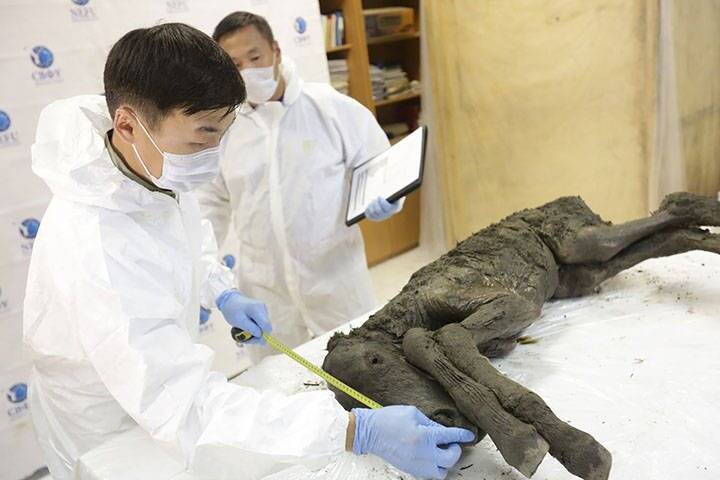Ancient Siberian Foal Blood

NEFUA perfectly preserved foal found in permafrost.
In late 2018, scientists in Siberia discovered an almost perfectly preserved foal that had been stuck in permafrost for 42,000 years. This year, that discovery was made even more amazing by the fact that those same scientists were able to extract liquid blood out of the foal in an attempt to use it for cloning.
In April, Dr. Semyon Grigoryev, head of the Mammoth Museum in Yakutsk claimed that the autopsy revealed an almost perfectly preserved interior – complete with a heart full of liquid blood, and a bladder full of urine. Both were extracted from the foal and preserved for further testing.
“We can now claim that this is the best-preserved Ice Age animal ever found,” Grigoryev said. “This is extremely rare for paleontological finds, because some of them are either incomplete, fragmented, with serious body deformations or strongly mummified,” he explained. “The foal’s hair is intact on its head, legs, and part of its body. Its tail and mane are black, the rest of the foal’s body is bay.”
The blood and urine are not the only unique find when it comes to the ancient foal.
“Having preserved hair is another scientific sensation as all previous ancient horses were found without hair,” he said. “Our studies show that at the moment of death the foal was from one to two weeks old, so he was just recently born.”
Now that the study is almost complete, the scientists are hoping to use the preserved DNA and samples to clone the animal.
“Hopefully, the world will soon meet the clone of the ancient foal who lived 42,000 years ago,” said Michil Yakovlev, editor of the university’s corporate media.





